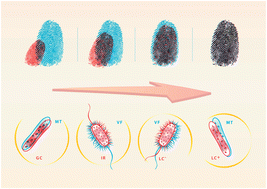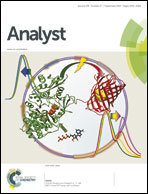Multiple metabolomics of uropathogenic E. coli reveal different information content in terms of metabolic potential compared to virulence factors†
Abstract
No single analytical method can cover the whole metabolome and the choice of which platform to use may inadvertently introduce chemical selectivity. In order to investigate this we analysed a collection of uropathogenic Escherichia coli. The selected strains had previously undergone extensive characterisation using classical microbiological methods for a variety of metabolic tests and virulence factors. These bacteria were analysed using Fourier transform infrared (FT-IR) spectroscopy; gas chromatography mass spectrometry (GC-MS) after derivatisation of polar non-volatile analytes; as well as reversed-phase liquid chromatography mass spectrometry in both positive (LC-MS+ve) and negative (LC-MS−ve) electrospray ionisation modes. A comparison of the discriminatory ability of these four methods with the metabolic test and virulence factors was made using Procrustes transformations to ascertain which methods produce congruent results. We found that FT-IR and LC-MS−ve, but not LC-MS+ve, were comparable with each other and gave highly similar clustering compared with the virulence factors tests. By contrast, FT-IR and LC-MS−ve were not comparable to the metabolic tests, and we found that the GC-MS profiles were significantly more congruent with the metabolic tests than the virulence determinants. We conclude that metabolomics investigations may be biased to the analytical platform that is used and reflects the chemistry employed by the methods. We therefore consider that multiple platforms should be employed where possible and that the analyst should consider that there is a danger of false correlations between the analytical data and the biological characteristics of interest if the full metabolome has not been measured.


 Please wait while we load your content...
Please wait while we load your content...